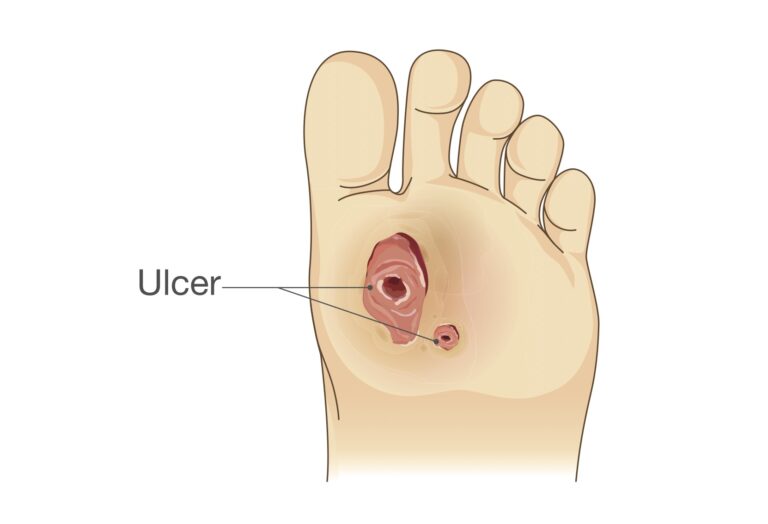Recognizing the Signs: 5 Indicators of Peripheral Arterial Disease
A vascular condition called peripheral artery disease, which usually affects the arteries in the legs, affects the arteries, not part of the heart or brain. It's a common yet often underdiagnosed condition that can lead to severe difficulties if left untreated. Recognizing the signs of PAD is crucial for early intervention and preventing further complications.
Here, we will explore five essential hands that may suggest the presence of peripheral arterial disease.
Intermittent Claudication:
- Description: Intermittent
claudication refers to pain, cramping, or fatigue in the muscles of the
legs, particularly during physical activity like walking.
- Explanation: Reduced blood flow to the legs results in inadequate muscle oxygen supply, causing discomfort. The pain typically resolves with rest but may reoccur during activities.
Leg Weakness or Numbness:
- Description: Some
individuals with PAD may experience weakness or numbness in their legs,
often accompanied by a sensation of heaviness.
- Explanation: Decreased blood flow can impair nerve function, leading to sensations of weakness or numbness. This can affect mobility and daily activities, making it a vital sign to watch for.
Coolness or Discoloration of the Skin:
- Description: The skin
on the legs may appear unusually cool to the touch, and there could be a
noticeable change in skin color.
- Explanation: Poor circulation reduces blood flow to the extremities, leading to coolness and discoloration. The skin may have a pale or bluish hue, indicating an inadequate oxygen supply.
Poor Wound Healing:
- Description: Individuals
with PAD may experience slow wound healing, especially on the legs and
feet.
- Explanation: Reduced blood flow impairs the body's supply of nutrients and oxygen to the affected areas. As a result, wounds may take longer to heal, and the risk of infection increases.
Weak or Absent Pulses in the Legs:
- Description: A
healthcare professional, particularly a Peripheral Vascular Doctor, may
notice weak or absent pulses in the legs during a physical examination.
- Explanation: Weakened or absent pulses indicate reduced blood flow through the arteries in the legs, confirming the presence of PAD. This is a critical diagnostic sign that requires further evaluation.
Importance of Seeking Medical Attention:
Peripheral Arterial Disease is a progressive condition that, if left unaddressed, can lead to severe difficulties such as crucial limb ischemia, where blood flow is severely restricted. Additionally, it may raise the chance of cardiovascular events such as strokes and heart attacks. Seeking quick medical attention is crucial for effective administration and preventing the condition's progression.
The Role of a Peripheral Vascular Doctor:
Consulting with a Peripheral Vascular Doctor is essential for a comprehensive assessment and diagnosis of PAD. These specialists are trained to evaluate vascular conditions, including PAD, and can recommend appropriate treatment options. They may employ various diagnostic tools, including ankle-brachial index (ABI) testing, ultrasound, and angiography, to assess the severity of the condition and formulate a tailored treatment plan.
Treatment Options for this Disease:
After a diagnosis, PAD can be controlled with medication, lifestyle changes, and, occasionally, surgery. Treatment goals include improving blood flow, alleviating symptoms, and reducing the risk of complications. Here are some common approaches:
- Lifestyle Modifications:
- We are
implementing regular exercise routines to improve circulation.
- Eating a diet
low in dripping fats and cholesterol is heart-healthy.
- Quitting smoking, as tobacco use significantly worsens PAD.
- Medications:
- Prescribed
medications to manage underlying conditions such as high blood pressure,
high cholesterol, and diabetes.
- Antiplatelet drugs to lower the chance of thrombosis.
- Minimally Invasive Procedures:
- Stent
implantation and angioplasty to open clogged or constricted arteries.
- Atherectomy to remove plaque buildup in the arteries.
- Surgical Interventions:
· Bypass surgery can improve circulation by rerouting blood flow around clogged arteries.
Peripheral Arterial Disease is a prevalent condition that
requires timely recognition and intervention. Awareness of signs, such as
intermittent claudication, leg weakness, skin changes, poor wound healing, and
weakened pulses, is crucial for seeking medical attention promptly. Consulting
with a Peripheral Vascular Doctor and implementing appropriate lifestyle
changes and treatment strategies can significantly improve outcomes for
individuals with PAD, reducing the risk of complications and enhancing overall
vascular health. Do not hesitate to seek the advice and complete evaluation of
a healthcare expert if you or someone you know exhibits these symptoms.



Comments
Post a Comment